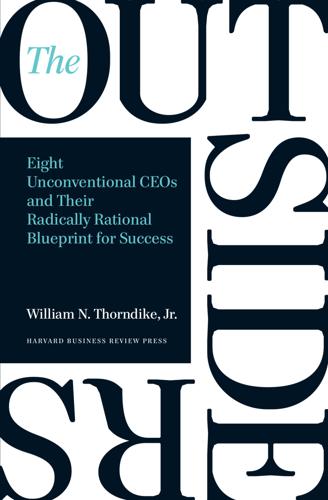
The Outsiders: Eight Unconventional CEOs and Their Radically Rational Blueprint for Success
by
William Thorndike
Published 14 Sep 2012
When a CEO generates significantly better returns than both his peers and the market, he deserves to be called “great,” and by this definition, Welch, who outperformed the S&P by 3.3 times over his tenure at GE, was an undeniably great CEO. He wasn’t even in the same zip code as Henry Singleton, however. . . . Known today only to a small group of investors and cognoscenti, Henry Singleton was a remarkable man with an unusual background for a CEO. A world-class mathematician who enjoyed playing chess blindfolded, he had programmed MIT’s first computer while earning a doctorate in electrical engineering. During World War II, he developed a “degaussing” technology that allowed Allied ships to avoid radar detection, and in the 1950s, he created an inertial guidance system that is still in use in most military and commercial aircraft.
…
Since going public, the company has also pursued an unusual and aggressive capital allocation strategy (one that has caused a fair amount of comment and confusion on Wall Street), maintaining generally high levels of leverage, repurchasing shares, and announcing a large special dividend (financed with debt) in the depths of the recent financial crisis. Not surprisingly, returns for the shareholders have also been excellent—the stock has appreciated over fourfold since the company’s 2006 initial public offering. CHAPTER 2 An Unconventional Conglomerateur Henry Singleton and Teledyne Henry Singleton has the best operating and capital deployment record in American business . . . if one took the 100 top business school graduates and made a composite of their triumphs, their record would not be as good as Singleton’s. —Warren Buffett, 1980 I change my mind when the facts change.
…
Chief executive officers—Biography. I. Title. HD38.2.T476 2012 658.4′09—dc23 2012012451 Contents Preface: Singletonville Introduction An Intelligent Iconoclasm 1. A Perpetual Motion Machine for Returns Tom Murphy and Capital Cities Broadcasting 2. An Unconventional Conglomerateur Henry Singleton and Teledyne 3. The Turnaround Bill Anders and General Dynamics 4. Value Creation in a Fast-Moving Stream John Malone and TCI 5. The Widow Takes the Helm Katharine Graham and The Washington Post Company 6. A Public LBO Bill Stiritz and Ralston Purina 7. Optimizing the Family Firm Dick Smith and General Cinema 8.
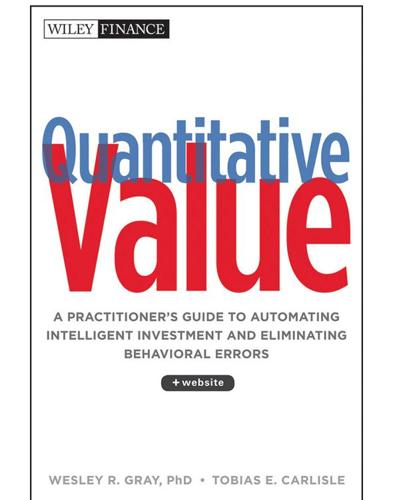
Quantitative Value: A Practitioner's Guide to Automating Intelligent Investment and Eliminating Behavioral Errors
by
Wesley R. Gray
and
Tobias E. Carlisle
Published 29 Nov 2012
By making repurchases when a company's market value is well below its business value, management clearly demonstrates that it is given to actions that enhance the wealth of shareholders, rather than to actions that expand management's domain but that do nothing for (or even harm) shareholders.” —Warren Buffett, Shareholder Letter, 19841 Henry Singleton is most notable for two achievements: building Teledyne from scratch into one of the most profitable and successful stocks in the United States at the time he stepped down 29 years later, and for his “almost arrogant scorn for most conventional business practices.”2 Warren Buffett has described Singleton as a “managerial superstar,”3 saying that he had “the best operating and capital deployment record in American business.”4 That is high praise indeed, coming from one of the world's greatest capital allocators.
…
Buyback spending among Standard & Poor's (S&P) 500 companies hit a record high in the third quarter of 2007, near the market peak. It shrank 86 percent over the next seven quarters as share prices tumbled.9 This behavior turns the stomach of value investors, but it's par for the course for most managements. The Henry Singletons are few and far between. Another method for measuring the performance of stocks is to measure the change in the stock's outstanding shares from one period to the next, rather than the amount of stock issued or repurchased or the dollar amount spent or raised, and then to examine the subsequent performance of the stock price.
…
We discuss the steps we take to increase the probability that the returns we analyze are possible, can be replicated by independent researchers, and are likely to provide favorable live performance in the future. NOTES 1. Warren Buffett, “Shareholder Letter,” Berkshire Hathaway, Inc. Annual Report, 1984. 2. Robert J. Flaherty, “The Singular Henry Singleton,” Forbes, July 9, 1979. 3. Warren Buffett, “Shareholder Letter,” Berkshire Hathaway, Inc. Annual Report, 1982. 4. John Train, The Money Masters (New York: HarperBusiness, 1994). 5. Flaherty. 6. Alison Leigh Cowan, “Wall St. Eyes Are on Teledyne.” New York Times, July 9, 1987. 7. David L.
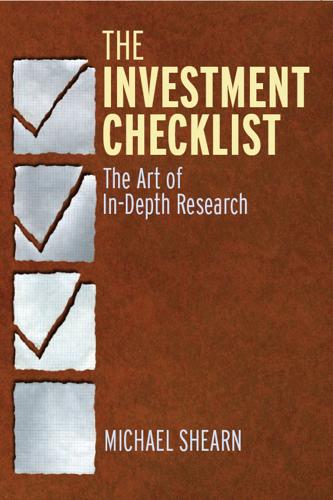
The Investment Checklist: The Art of In-Depth Research
by
Michael Shearn
Published 8 Nov 2011
The best capital allocators delegate the day-to-day operations to other managers within the business; for example, Carlino delegates the day-to-day operations to COO Tim Wilmott. This allows these CEOs to see the big picture and not get bogged down in the details. One of the best capital allocators in corporate history was Henry Singleton, longtime CEO of Teledyne, who cofounded the business in 1960 and served as CEO until 1986. In John Train’s book The Money Masters, Warren Buffett reported that he believes “Henry Singleton has the best operating and capital-deployment record in American business.” When Teledyne’s stock was trading at extremely high prices in the 1960s, Singleton used the high-priced stock as currency to make acquisitions.
…
Look for Managers Who Continually Increase Their Ownership Interest in the Business The best managers to partner with are those who continually increase or retain their ownership in the business. For example, the following CEOs have sold very limited quantities of their companies’ stock during their tenures: Warren Buffett, CEO of Berkshire Hathaway; Bruce Flatt, CEO of Brookfield Asset Management; Dave and Sherry Gold, founders of 99 Cent Only Stores; and Henry Singleton, former CEO of Teledyne. Singleton, for example, did not receive any option awards and only sold stock in 1987 and 1988 after continuing to buy it for more than 20 years.28 Bruce Flatt was once asked what his hobby was, and he responded that it was collecting shares of his stock. All of these businesses have created tremendous value for shareholders over the long term.
…
Both of these were major stumbling blocks that Motorola had not fully considered when it was developing the service.11 Motorola had focused so much on achieving its strategic goal that it neglected the basics of getting good customer feedback early on. Here are a few examples of businesses operated by CEOs who do not follow well-formulated strategic plans but instead improve the business day by day. Henry Singleton, CEO of Teledyne Inc. from the 1960s through the 1980s, believed the best plan was no plan. Under his tenure, Teledyne’s stock compounded at more than 20 percent for more than 20 years. He believed it was better to approach an uncertain world with an open mind. Singleton once remarked at a Teledyne annual meeting, “. . . we’re subject to a tremendous number of outside influences, and the vast majority of them cannot be predicted.
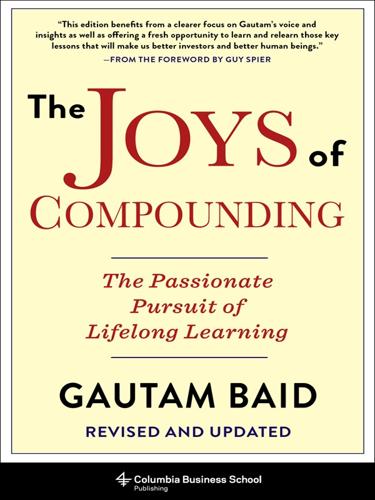
The Joys of Compounding: The Passionate Pursuit of Lifelong Learning, Revised and Updated
by
Gautam Baid
Published 1 Jun 2020
Peter Lynch, One Up on Wall Street: How to Use What You Already Know to Make Money in the Market (New York: Simon and Schuster, 2000). 27. Updating Our Beliefs in Light of New Evidence 1. Michael Rothschild, Bionomics: Economy as Business Ecosystem (Beard Books, 1990). 2. Carter Johnson, “Dr. Henry Singleton and Teledyne,” ValueWalk, April 27, 2018, https://www.valuewalk.com/2018/04/dr-henry-singleton-and-teledyne. 3. Whitney Tilson, “Notes from the 2004 Wesco Annual Meeting,” Whitney Tilson’s Value Investing Website, May 5, 2004, https://www.tilsonfunds.com/wscmtg04notes.doc. 4. Scott Fearon and Jesse Powell, Dead Companies Walking: How a Hedge Fund Manager Finds Opportunity in Unexpected Places (New York: St.
…
“Investing Instinct.” Investment Masters Class. http://mastersinvest.com/investinginstinctquotes. Jobs, Steve. “ ‘You’ve Got to Find What You Love,’ Jobs Says.” Stanford News, June 14, 2005. https://news.stanford.edu/2005/06/14/jobs-061505. Johnson, Carter. “Dr. Henry Singleton and Teledyne.” ValueWalk, April 27, 2018. https://www.valuewalk.com/2018/04/dr-henry-singleton-and-teledyne. Jordon, Steve. “Investors Earn Handsome Paychecks by Handling Buffett’s Business.” Omaha World-Herald, April 28, 2013. https://www.omaha.com/money/investors-earn-handsome-paychecks-by-handling-buffett-s-business/article_bb1fc40f-e6f9-549d-be2f-be1ef4c0da03.html.
…
—Phil Fisher When businesses treat equity capital as gold, even those with limited internal compounding growth opportunities can create significant shareholder value through disciplined capital allocation. If excess free cash flow cannot be reinvested, then look for sound capital allocation that might result in dividends or value-accretive buybacks and acquisitions. Henry Singleton of Teledyne Technologies was an exemplary capital allocator. He would issue shares to acquire cheaper companies when his company’s stock was trading at expensive P/E multiples of 40× to 50×, and when his stock P/E was in single digits, he would repurchase stock. It is smart capital allocation to raise equity at a low dilution when the shares are trading at steep valuations.
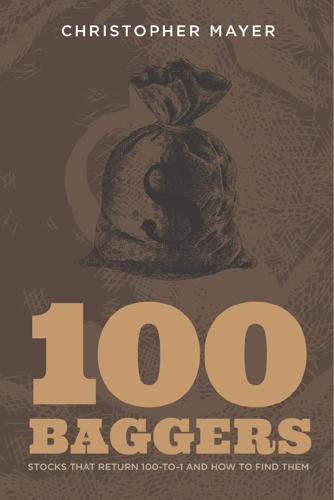
100 Baggers: Stocks That Return 100-To-1 and How to Find Them
by
Christopher W Mayer
Published 21 May 2018
And it serves as a handbook for exactly the kind of thing I spend so much time looking for: truly great owner-operators. Finally, but just as importantly, the quest for the next 100-bagger logically begins with a study of the wizards who have already done it. 94 100-BAGGERS Thorndike profiles eight CEOs. Four of their stocks became 100baggers under their watch. These CEOs include Henry Singleton at Teledyne (180-bagger), Tom Murphy at Capital Cities (204-bagger) and John Malone at TCI (900-bagger). Oh, and Warren Buffett. There are also four who don’t quite make the cut of being a 100-bagger, such as Katharine Graham at the Washington Post (89-bagger) and Bill Stiritz at Ralston Purina (52-bagger).
…
Outsiders show “a genius for simplicity,” Thorndike writes. This allowed them to cut “through the clutter of peer and press chatter to zero in on the core economic characteristics of their business.” He provides many examples of all these traits. And you see the result: some jaw-dropping track records. Take Henry Singleton of Teledyne. (This is one of my favorite case studies in all of business history.) Teledyne was a conglomerate—nothing too special. But look at how Singleton used his tool kit. He avoided paying dividends. He ignored reported earnings, focusing on cash flow. He had Teledyne buy back 90 percent of its stock over time.
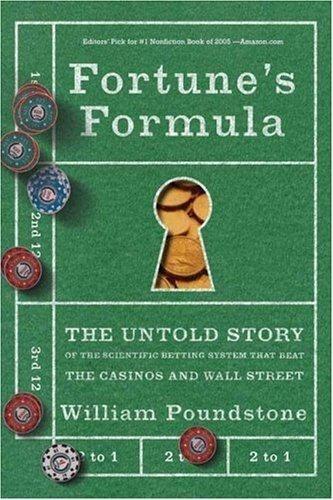
Fortune's Formula: The Untold Story of the Scientific Betting System That Beat the Casinos and Wall Street
by
William Poundstone
Published 18 Sep 2006
Harrison Labs is not a familiar name today because it was acquired by Hewlett-Packard in 1962. The stock’s price zoomed, and Shannon got a handsome chunk of Hewlett-Packard stock in the merger. The size of the paper profit convinced him that there was real money to be made in stocks. The experience with Harrison made Shannon receptive when another friend, Henry Singleton, spoke of starting his own company. Singleton was a close friend of Shannon’s from MIT graduate school. They played chess together. For a while, Singleton lived in Greenwich Village near Bell Labs. Then he moved west to work in the booming defense industry. In 1960 Singleton and George Kozmetsky founded Teledyne, a defense contractor selling digital navigation systems to a still-analog Pentagon.
…
When they were thinking of investing in Kentucky Fried Chicken, they bought the chicken and served it to friends to gauge their reactions. “If we try it and don’t like it,” Shannon said, “we simply won’t consider an investment in the firm.” Shannon became a board member of Teledyne. He was not just a distinguished name in the annual report but was actively scouting potential acquisitions for CEO Henry Singleton. For instance, in 1978 Shannon investigated Perception Technology Corporation on behalf of Teledyne. Perception Technology was founded by an MIT physicist, Huseyin Yilmaz, whose training was largely in general relativity. During the visit with Shannon, Yilmaz spoke enthusiastically about physics, asserting that there was a “gap in Einstein’s equation” which Yilmaz had filled with an extra term.

The Everything Blueprint: The Microchip Design That Changed the World
by
James Ashton
Published 11 May 2023
Arthur Rock, the legendary venture capitalist who had paired the Traitorous Eight’s ideas with Sherman Fairchild’s funds two decades earlier, invested too. He was intrigued by Markkula’s enthusiasm after Wozniak presented to Intel’s board on the merits of the personal computer. Seeing potential through the hippy exterior, Rock roped in Henry Singleton, chairman of the US electronics conglomerate Teledyne, to become a third backer.19 Their faith was rewarded as Apple II unit sales leapt from 2,500 in 1977 to 210,000 in 1981, aided by the popularity among business owners of VisiCalc, a spreadsheet software package that ensured the personal computer broke through as a new, mainstream product category in the US.20 The success left Jobs with money to play with but a headache.
…
Around the table were leading industry names who had carved out reputations as canny investors. The board still included the trio that gave Apple its start in the 1970s. The company’s chairman was Mike Markkula, the former Intel marketer, who for a time also served as Apple’s chief executive. Alongside him sat the venture capitalist Arthur Rock and Teledyne’s Henry Singleton. For such a modest sum, their assent was never in doubt, but the final agreement still came down to the wire. Tesler cannily kept two processor options alive just in case the spin-off foundered. At the eleventh hour, VLSI tried to negotiate up its shareholding but Tesler was having none of it.
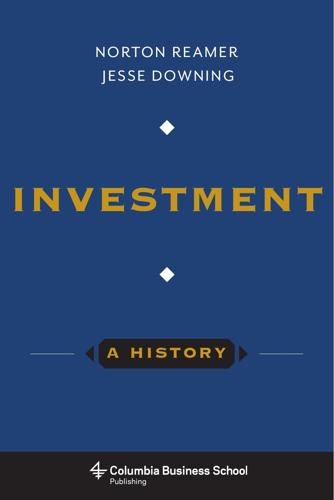
Investment: A History
by
Norton Reamer
and
Jesse Downing
Published 19 Feb 2016
Although the modern concept of the CEO as an executor of management technique, objective setting, and implementation has continued to be dominant, another management model has gained traction The Investment Challenge 7 in recent years. The success of CEOs who place emphasis on effective allocation of capital and people has led to a reappraisal of the hierarchy of management skills.8 Noteworthy examples of these CEOs include Warren Buffett (Berkshire Hathaway), Henry Singleton (Teledyne), and Thomas Murphy (Capital Cities), all of whom have demonstrated the significant impact of CEOs as allocators of capital and human resources. Often this focus on capital allocation is paired with an executive style that emphasizes meaningful decentralization in the management hierarchy.
…
Decentralized management approaches identify experienced, skilled, and accomplished leaders for different segments of a business network, allowing them to operate with relatively little day-to-day supervision beyond that exercised via control of major available resources. In the view of many management theorists, management control of this sort offers distinct advantages over the more minute-to-minute frenetic activity of dominating, control-oriented CEOs.9 Henry Singleton, the CEO of Teledyne from the 1960s to the 1980s, was a wonderful example of this management style. While there were earlier CEOs who focused more on resource allocation than on the more traditional management skills such as execution of management technique and implementation of day-to-day management plans, Singleton seemed to be the most striking contemporary departure from this dominant model.
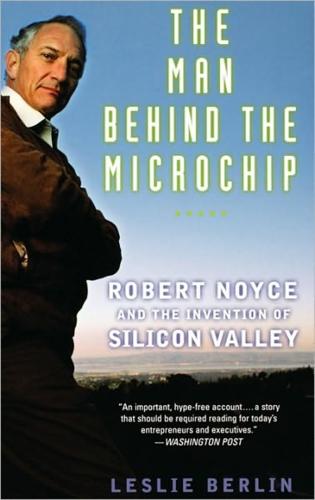
The Man Behind the Microchip: Robert Noyce and the Invention of Silicon Valley
by
Leslie Berlin
Published 9 Jun 2005
Camera and Instrument immediately forbade them from participating, citing potential conflict of interest. No one noted it at the time, but Davis and Rock were launching the first venture capital fund on the West Coast.75 Rock had become a close friend to Jay Last and so knew of Last’s longstanding dissatisfactions at Fairchild. Rock had also made the acquaintance of Henry Singleton, a PhD engineer who had left his research job at Litton Industries two years before to start a high-tech conglomerate he called Teledyne. Singleton wanted to start a division of Teledyne to develop advanced semiconductor devices for military applications. In other words, he wanted to start an integrated circuits company.
…
“Nothing else was really in Intel’s best interest,” Markkula acknowledges.48 But Arthur Rock had paid careful attention to Markkula and Wozniak’s presentation. A few days later, he called Markkula’s office. “I want to talk to these guys,” Rock said. After attending a small computer hobbyists’ convention and noticing many more people crowded around the Apple booth than any other, Rock decided to invest $60,000 in the company. He also brought in Henry Singleton of Teledyne, who invested $108,000. In 1977, Regis McKenna, who handled Intel’s public relations, began working with Apple. He hosted a party, one of whose key objectives was to introduce Ann Bowers, who was building her consulting business, to Steve Jobs, who McKenna thought needed to hire a human-resources expert.

The Power Law: Venture Capital and the Making of the New Future
by
Sebastian Mallaby
Published 1 Feb 2022
Time passed and nothing happened. Last and Hoerni seemed too timid to act. So Rock spoke with Teledyne’s boss, Henry Singleton, explaining why his hiking friends would be assets to his enterprise. Then he placed a call to Fairchild midway through the company’s Christmas gift exchange, which featured none other than Jay Last dressed up as Santa Claus. Now was the time to seize the moment, Rock pressed the vacillating Santa, wheeling out the man-or-mouse challenge beloved by later headhunters. Henry Singleton was by his phone, Rock urged him. He was sitting there, waiting, expecting Last’s call.[53] Last duly dialed Singleton and agreed to meet him at Teledyne’s headquarters in West Los Angeles.[54] He promised to bring Hoerni along.
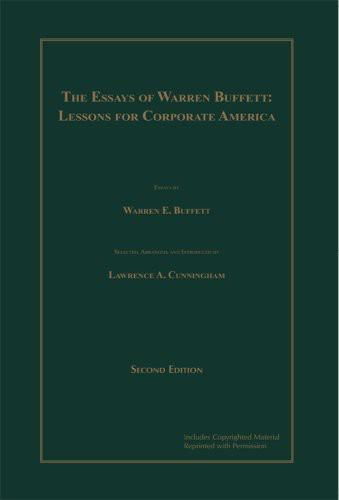
The Essays of Warren Buffett: Lessons for Corporate America
by
Warren E. Buffett
and
Lawrence A. Cunningham
Published 2 Jan 1997
However, very few enterprises possess both characteristics, and competition to buy those that do has now become fierce to the point of being self-defeating. The second category involves the managerial superstars-men who can recognize that rare prince who is disguised as a toad, and who have managerial abilities that enable them to peel away the disguise. We salute such managers as Ben Heineman at Northwest Industries, Henry Singleton at Teledyne, Erwin Zaban at National Service Industries, and especially Tom Murphy at Capital Cities Communications (a real managerial "twofer", whose acquisition efforts have been properly focused in Category 1 and whose operating talents also make him a leader of Category 2). From both direct and vicarious experience, we recognize the difficulty and rarity of these executives' achievements.
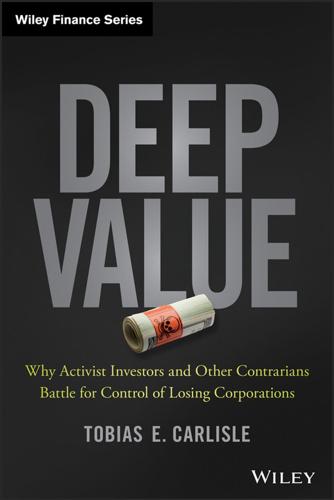
Deep Value
by
Tobias E. Carlisle
Published 19 Aug 2014
By 1966, Litton had sales of $1 billion, and sold more than 5,000 products, including such high-technology exotica as oil drilling rigs, submarines, credit cards, trading stamps, and, of course, mechanical tabulating machines.14 The torrid pace of acquisitions since Thornton had taken over in 1954 had burned out a number of the top executives. Those that left were called LIDOs—Litton Industries Drop Outs—and Litton became known as a “school for conglomerateurs.”15 One notable LIDO was Henry Singleton, who, along with another Litton alumnus, left to form Teledyne. Buffett has described Singleton as a “managerial superstar,”16 with “the best operating and capital deployment record in American business.”17 The LIDOs and others aped Litton, but none had Thornton’s zeal for publicity and deft touch in investor relations.

Concentrated Investing
by
Allen C. Benello
Published 7 Dec 2016
Shannon got his first taste of blood in the market by investing in high technology start‐ups helmed by his MIT and Bell Labs contemporaries.12 His first big win came from a shareholding in Harrison Laboratories, Inc., started in 1954 by Charles William “Bill” Harrison, a former Bell Labs scientist, and his wife, Gwen. The company made parts for the nascent field of color television cameras. When Hewlett‐Packard acquired it in 1962, Shannon received stock as part of the merger, and was struck by the size of the gain.13 He also invested in Teledyne, Inc., a new venture started by Henry Singleton, a close friend and alumnus from MIT’s graduate school. Shannon bought in 1960 at the $1 initial public offer price.14 By 1967, the stock traded for $24. None other than Warren Buffett would later describe Singleton as a “managerial superstar,”15 with “the best operating and capital deployment record in American business.”16 Shannon would go on to sit on the board of Teledyne, and would conduct technical and business diligence on potential acquisitions at Singleton’s behest.
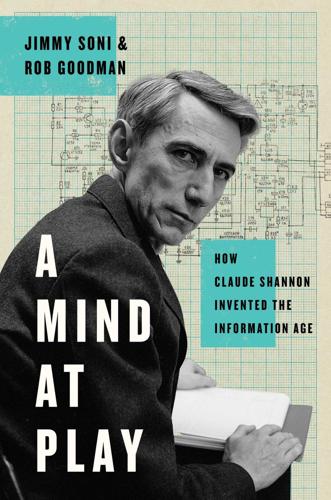
A Mind at Play: How Claude Shannon Invented the Information Age
by
Jimmy Soni
and
Rob Goodman
Published 17 Jul 2017
Not only was there the combination of the MIT and Bell Labs pay, but Shannon had been on the ground floor of a number of technology companies. One former colleague, Bill Harrison, had encouraged Shannon to invest in his company, Harrison Laboratories, which was later acquired by Hewlett-Packard. A college friend of Shannon, Henry Singleton, put Shannon on the board of the company he created, Teledyne, which grew to become a multibillion-dollar conglomerate. As Shannon retold the story, he made the investment simply because “I had a good opinion of him.” If there can be said to have been an old boys’ club of Silicon Valley in its initial days, then Claude Shannon was a card-carrying member—and he benefited from all the privileges therein.
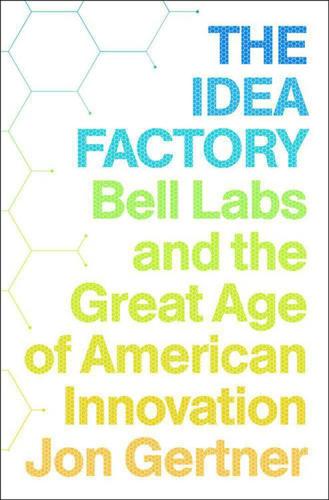
The Idea Factory: Bell Labs and the Great Age of American Innovation
by
Jon Gertner
Published 15 Mar 2012
Baker insisted it was an honorable thing to do “should the man who came up with information theory” suffer any kind of financial hardship.)25 Shannon had become wealthy, too, through friends in the technology industry. He owned significant shares in Hewlett-Packard, where his friend Barney Oliver ran the research labs, and was deeply invested in Teledyne, a conglomerate started by another friend, Henry Singleton. Shannon sat on Teledyne’s board of directors. The stock market was therefore just another puzzle, albeit one with a pleasant proof of success. He was convinced that the stock market was less efficient than some economists believed, and that a smart investor who took advantage of mispriced stocks could do quite well.26 Len Kleinrock, Shannon’s former student, recalls that one day at MIT, Shannon mentioned that he was making a mathematical model of the stock market.

Valley of Genius: The Uncensored History of Silicon Valley (As Told by the Hackers, Founders, and Freaks Who Made It Boom)
by
Adam Fisher
Published 9 Jul 2018
I always suggested that it was a lot of things all happening just right with some serendipity thrown in: an amazing product, a client that wants an amazing commercial, a great director, and then the Apple board… Mike Murray: So we get it done and we are told that we need to show it to the board of directors, and Steve is chairman of the board. It was Phil Schlein and Mike Markkula and Art Rock and Henry Singleton, and Steve and maybe one or two others. I remember very clearly going into that board meeting. We had a TV on one of these rolling carts and we send it out and we show it. They roll tape: Big Brother is on a television of enormous size addressing a crowd of zombified skinheads. Suddenly a beautiful young blonde wearing a Macintosh-branded tank top and red hot pants runs to the front of the crowd while swinging a hammer.
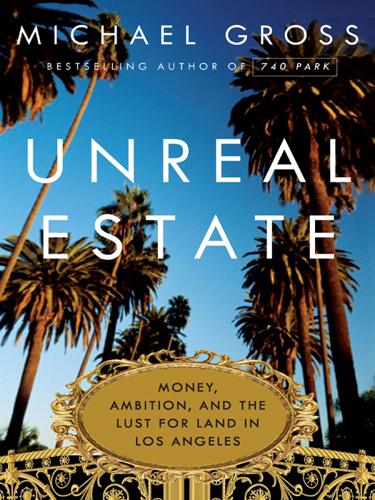
Unreal Estate: Money, Ambition, and the Lust for Land in Los Angeles
by
Michael Gross
Published 1 Nov 2011
The winner that year proved to be Richard Nixon, but Frawley and his political friends had seen the future. The group of California conservatives who brought Reagan to power included Frawley; Bloomingdale; Henry Salvatori; Taft Schreiber, an MCA executive; Holmes Tuttle, a car dealer and realtor; Tom Jones, the chairman of the defense contractor Northrup; Henry Singleton, a former OSS (Office of Strategic Services) man and engineer who cofounded Teledyne, the conglomerate that made everything from unmanned aircraft to Waterpik shower heads;14 Earle Jorgensen, who turned a scrap steel distributorship into a giant industrial concern; drugstore owner Justin Dart; corporate lawyer William French Smith; and A.